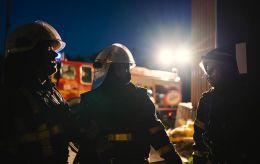1,000 days of pain, sweat and resistance: How Ukrainians have endured Russia’s war
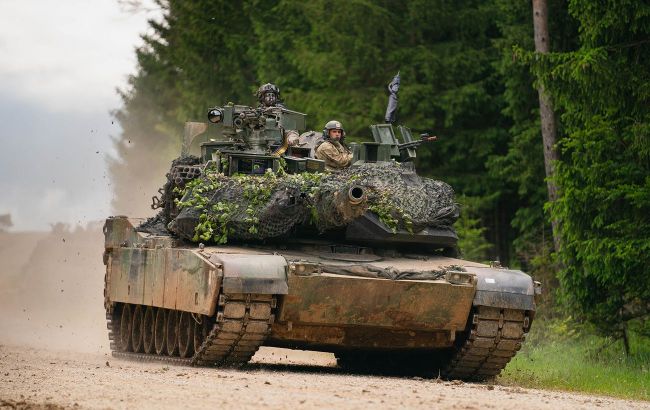 Ukrainian soldiers on an Abrams tank (All photos: Vitalii Nosach/RBC-Ukraine and Getty Images)
Ukrainian soldiers on an Abrams tank (All photos: Vitalii Nosach/RBC-Ukraine and Getty Images)
About the key events of the Russo-Ukrainian war over 1,000 days of resistance, as well as the people, weapons, and course of the conflict - in the material by RBC-Ukraine
A thousand days ago, Russia launched a full-scale invasion of Ukraine. The events that unfolded during these nearly three years could fill several epochs for multiple nations. And it’s not just about the frontlines.
Mass migration and millions of refugees, Russian war crimes, missile strikes on residential areas, destruction of energy infrastructure, closed borders, prisoner exchanges, life under martial law, mobilization, ecological disasters, and ruined cities — this is only a partial list of the events, trials, and immense pressures endured by Ukrainians.
The RBC-Ukraine editorial team recalls the most significant events, which caused a public outcry, influenced the course of the war, forced the world to open its eyes, and left permanent scars on the Ukrainian nation.
The tragic events of the past 1,000 days have long dissolved into the flow of news cycles and become routine for the world. A routine that Ukrainians face daily and to which it seems impossible to ever grow accustomed. The world was horrified by the atrocities of the Bucha massacre and the bombing of Mariupol but later began to overlook the almost daily deaths of children and women caused by Russian missiles and drones in Odesa, Lviv, Kryvyi Rih, and other cities.
Despite the ongoing war that continues to claim the lives of civilians in rear cities and soldiers on the frontlines, the world has started to grow weary of the Ukrainian agenda. Western media find it increasingly difficult to "sell" Ukraine's story to their audiences, pushing news about Ukraine further from the front pages and replacing it with more current content.
After the US elections, many hoped for a quick peace. Donald Trump's victory may have prematurely put words like "negotiations" and "end of the war" on the lips of world leaders. However, these expectations conflict with Russia’s recent actions — continuing pressure on the frontlines, turning entire cities in the East into ruins, and destroying energy infrastructure and residential areas in the rear. The events of the past 1,000 days serve as a powerful reminder of the evil Ukrainians are resisting and the danger the rest of the world is gradually forgetting, either silently or openly dreaming of appeasing the aggressor at any cost.
Invasion
At approximately 4 a.m. on February 24, 2022 (Kyiv time), after Vladimir Putin announced the launch of a so-called "special military operation," several large Russian forces began their offensive.
Enemy troops invaded the Kyiv and Chernihiv regions from the territory of Belarus, a Russian satellite state, and entered the Sumy and Kharkiv regions from Russia. Simultaneously, other groups advanced from the occupied parts of the Donetsk and Luhansk regions, as well as Crimea.
Regular massive missile strikes on airfields, Ukrainian air defense positions, military units, and civilian infrastructure across all regions of the country accompanied the offensive actions of the enemy forces.
 Negotiations in Belarus
Negotiations in Belarus
Just days after the full-scale invasion began, in late February 2022, Ukrainian and Russian delegations met for initial negotiations. The meetings were held in Belarus, first near the Ukrainian border and later in Belovezhskaya Pushcha, close to Poland. According to participants speaking to RBC-Ukraine, representatives of the aggressor nation essentially proposed that Ukraine agree to capitulation and were shocked to find that Ukrainian delegates had no intention of doing so. These negotiations did not affect the course of the war.
Bayraktars and other UAVs
Ukraine first began using Turkish drones, Bayraktar, during combat operations in the Donbas in the fall of 2021, before the full-scale war. However, in the first few weeks of the full-scale invasion, these drones demonstrated maximum effectiveness, becoming one of the most well-known weapons employed by Ukraine and a symbol of Ukrainian resistance and allied support.
Over time, as new types of weapons were introduced, the Bayraktar was increasingly used on the frontline as a guide and relay for smaller drones.
The use of the Bayraktar and the results shown by these Turkish UAVs highlighted the effectiveness of drones in modern warfare. Ukraine launched the production of UAVs of various types, including reconnaissance, strike, and kamikaze drones. Today, drones are widely used along the entire front line and beyond it - on Russian territory, targeting oil refineries, weapons factories, and airfields.
Meanwhile, Russia has also prioritized UAVs, supplementing its developments with purchases. In 2022, Moscow acquired its first Shahed-136 drones from Iran. On September 12, 2022, Ukrainian forces shot down an Iranian drone for the first time in the Kharkiv region. Since then, Russia has regularly attacked Ukraine with Shaheds.
Sanctions against Russia
From the early days of the full-scale war, Western countries escalated their anti-Russian sanctions, which had been in place in a limited capacity since 2014, to a new level. Among the most significant measures were the freezing of Russian Central Bank assets, other financial restrictions such as disconnecting major Russian banks from the SWIFT system, various trade restrictions, rejection of Russian energy resources, bans on supplying technologies to Russia, and more.
In total, 14 sanction packages were introduced against Russia. However, they failed to inflict irreparable harm on the aggressors. This was mainly due to the gradual and phased implementation of the sanctions, which allowed Moscow time to prepare and find workarounds. Efforts to close loopholes and develop new measures have continued throughout the war.
 Breakthrough in the south and near-encirclement of Kyiv
Breakthrough in the south and near-encirclement of Kyiv
The fastest advance of the enemy occurred in the south. Within just a few weeks, the occupiers effectively established a land corridor from Russia to Crimea. They seized most of the Zaporizhzhia region, nearly the entire Kherson region, including the city of Kherson, surrounded Mariupol, and advanced toward Mykolaiv.
In the north, the captured territory was not as vast, but during the initial weeks of the invasion, the enemy came dangerously close to achieving its goal of entering Kyiv.
Russian forces reached the outskirts of the capital from the north and west, gaining control of two key highways to the west – the Warsaw and Zhytomyr highways. Another group of troops approached Kyiv from the northeast near Velyka Dymerka settlement, advancing from the neighboring Chernihiv region.
Occupiers withdraw from northern Ukraine
A turning point in the battle for the northern regions, including the capital, occurred around March 15–20. By then, the Russian advance in Chernihiv and Sumy regions, where they aimed to break through to Brovary and Boryspil, had stalled.
Another group of Russian forces was stopped on the northern and western outskirts of Kyiv – in Dymer, Irpin, Hostomel, Borodianka, and Bucha towns. During their control of these areas, the occupiers committed numerous atrocities against the local population, including murders, torture, beatings, and violence.
The last attempt by the occupiers to break into Kyiv occurred in the village of Moshchun, where Ukrainian forces repelled them between March 19 and 21. Following this, the Defense Forces managed to drive the enemy out of Makariv, Irpin, and other nearby settlements. Suffering heavy losses and facing logistical challenges, the enemy began a hasty retreat from all northern regions, later presenting it in the Kremlin as a "gesture of goodwill" during negotiations in Istanbul.
The last occupying forces left Kyiv region on April 2. In the following days, they also withdrew from Chernihiv and Sumy regions.

Negotiations in Istanbul
From the early days of the war, Türkiye actively offered its mediation. As a result, at the end of March, the most substantial negotiations between Ukraine and Russia took place in Istanbul since the beginning of the war. These talks opened a potential opportunity for at least a temporary ceasefire. The main issues discussed were security guarantees for Ukraine and the withdrawal of Russian troops, at least to the February 23, 2022, lines. However, no concrete agreements were reached. The retreat of Russian troops from northern Ukraine revealed details of the atrocities committed by the occupiers against civilians. Within weeks, the topic of negotiations faded into irrelevance.
Bucha
When Russian forces began retreating from the Kyiv region, the world saw countless pieces of evidence of the atrocities committed during the occupation of Bucha town. The bodies of murdered civilians lay in the streets, houses, and basements. People were executed, raped, and tortured.
According to the Office of the Prosecutor General, 637 civilians were killed in the town. The war crimes committed by Moscow near Kyiv changed the West’s perception of the Russia-Ukraine conflict, prompting more active military support for Ukraine.
Siege and fall of Mariupol
By late February 2022, Mariupol - a city with nearly half a million residents before the war - was encircled. Russian forces approached from the north, east, and later the west, advancing from the Zaporizhzhia region through Crimea.
The city's defense under complete siege lasted 82 days. During this time, the Russian occupiers indiscriminately bombarded residential areas and civilian structures daily with artillery and airstrikes. Communication towers, utilities, and hospitals were destroyed. The city was left without water, electricity, or heat. Russian forces struck a functioning maternity hospital and the drama theater, where hundreds of people were sheltering. The occupiers also blocked civilian evacuation efforts.
The defense of Mariupol was led by the Azov Regiment, other National Guard units, the State Border Guard Service, National Police units, the 36th Marine Brigade, local territorial defense forces, and fighters from several other Armed Forces brigades.
By mid-March, Ukrainian forces controlled half the city. By late April, the Azovstal plant became the epicenter of Ukrainian resistance. Enemy forces made relentless efforts to dislodge Ukrainian defenders, regularly dropping bombs and even using chemical weapons. In mid-May, Ukrainian leadership ordered the defenders at Azovstal to surrender to save their lives. The Ministry of Internal Affairs reported that several thousand Ukrainian soldiers left the plant, while the Russian Ministry of Defense claimed the number was 2,439.
The Russian invasion and their orchestrated genocide resulted in the death of at least 22,000 Mariupol residents, according to local authorities as of mid-April 2022. The actual death toll could be much higher.

M777 howitzer – First Western artillery in the Ukrainian Armed Forces
In May 2022, the legendary M777 howitzer, also known as the "Three Axes," became part of the Ukrainian Armed Forces' arsenal. At that time, Ukrainian troops primarily received weapons suitable for guerrilla warfare from allies, such as grenade launchers, anti-tank systems, body armor, and helmets. The howitzer was among the first Western weaponry systems that could be widely used not just for defense but also for offensive operations.
 HIMARS as a game changer
HIMARS as a game changer
By June 2022, the first HIMARS multiple-launch rocket systems (MLRS) arrived in Ukraine. They were quickly dubbed "game changers" as they forced the Russian occupiers to hastily relocate their depots far from the front line and revise their logistics. The precision strikes by HIMARS enabled the Ukrainian Armed Forces to seize the initiative or, at the very least, significantly slow down the enemy, altering the battlefield dynamics.
Ukraine gains EU candidate status
Just five days into the full-scale invasion, on February 28, Ukraine officially applied to join the European Union. Kyiv advocated for immediate membership under a special procedure due to exceptional circumstances. While immediate accession did not happen, Ukraine's European integration process accelerated remarkably. On June 23, 2022, Ukraine was granted candidate status for EU membership.
 Counteroffensive in the Kharkiv region
Counteroffensive in the Kharkiv region
In early September 2022, Ukrainian forces launched a swift and successful counteroffensive in the Kharkiv region. Planned under strict secrecy, the operation caught the enemy off guard.
During this operation, Ukrainian Defense Forces liberated 2,500 square kilometers in just a week, reclaiming almost the entire Kharkiv region, parts of Donetsk, and a small section of Luhansk. Entire Russian units were defeated, many retreating hastily and abandoning artillery, ammunition, and equipment.
Ukraine applies for NATO membership
On September 30, 2022, Ukraine applied for expedited NATO membership. However, Kyiv later acknowledged that full membership would be impossible before the end of hostilities and instead focused on securing a political invitation to join the alliance. Despite two NATO summits in Vilnius and Washington, such an invitation was not extended. Member states only agreed that Ukraine would not need to go through the Membership Action Plan (MAP) phase. The main opponents to Ukraine's closer ties with NATO are believed to be the United States and Germany.
Ban on negotiations with Putin
On the day Ukraine applied for NATO membership, the National Security and Defense Council made a decision deeming negotiations with Russian President Vladimir Putin impossible. This effectively closed the door to any negotiations for a long time. As discussions about negotiations gained momentum again in 2024, the decree began to be interpreted differently: the ban applies only to Putin personally, while negotiations with Russia as a state could be possible, particularly in the framework of peace summits.
Russia's annexation of four Ukrainian regions
On October 5, 2022, Vladimir Putin signed laws formalizing the so-called "accession" of four Ukrainian regions - Donetsk, Luhansk, Zaporizhzhia and Kherson - into Russia. At that time, and even today, Russian forces do not fully control these regions. According to the Russian constitution, the boundaries of these regions are defined by their borders "as of the day of their admission to Russia." Both Putin and his officials frequently refer to Zaporizhzhia and Kherson as Russian cities.
The constitutional amendments were preceded by "referendums" held in occupied territories at the end of September 2022, lasting five days. Initially, Russian forces and collaborators went door-to-door to collect votes from residents. On the final day, people were coerced into voting at polling stations. The electoral commissions reported that 80-90% voted in favor of joining Russia. Neither the "referendum" nor the annexation of these occupied territories has been recognized by other countries.
Attack on the Crimean Bridge
On October 8, 2022, the Crimean Bridge was attacked when a truck exploded on it. Beyond its practical implications - providing logistical support to Russian forces in Donbas -the destruction of the bridge held significant symbolic value. The Kremlin had invested heavily in this project, presenting its construction as a definitive consolidation of Crimea’s annexation. The attack coincided with Vladimir Putin’s birthday, amplifying its symbolic weight.
 Massive shelling of energy infrastructure
Massive shelling of energy infrastructure
Following Ukraine’s successful offensive in the Kharkiv region in September 2022, Putin initiated a series of attacks on Ukrainian energy facilities. By October, Moscow had launched systematic strikes on energy infrastructure.
Between October 2022 and March 2023, Russia targeted Ukrainian energy facilities every 7-14 days with missiles and kamikaze drones like Shahedd. These attacks paused in March but resumed at the end of March 2024, continuing sporadically over the summer with less intensity. Currently, it seems Moscow has launched a new campaign of strikes against Ukraine's energy network. The goal of this terror campaign is to pressure Ukraine into negotiating a capitulation.
Peak of Russia's nuclear hysteria, 'dirty bomb'
The successful counteroffensive by Ukraine's Armed Forces (UAF) in the Kharkiv region in September 2022 caused hysteria within Russia's leadership. Threats of using nuclear weapons were constantly voiced by Moscow. As usual, Russia attempted a "false flag operation," accusing Ukraine of creating a dirty nuclear bomb, an allegation without any evidence. Much later, it became known that the US assessed the risk of a nuclear conflict at 50/50.
In response, the Americans and their Western allies conveyed through all possible channels the inadmissibility of a nuclear strike. Even Russia's allies, like China, were involved in persuading Moscow. By early November, Chinese leader Xi Jinping publicly stated that "nuclear wars must not be fought," a statement widely interpreted as a signal to Russia. Since then, nuclear rhetoric in the context of the Russia-Ukraine war has significantly subsided.
Initial reports of Ukraine preparing an offensive on Kherson emerged in the summer of 2022. By late August, claims about the UAF launching a counteroffensive in the south began circulating. However, significant ground advancements during September were limited.
Despite this, Ukrainian forces systematically inflicted heavy strikes on the occupiers, targeting their depots, weapons, command posts, and most critically - logistics. Key crossings over the Dnipro River were consistently disrupted using HIMARS and MLRS systems. This made it increasingly difficult for Russia to supply its large contingent on the right bank of the Dnipro.
From October, Ukrainian forces began advancing from various directions - north of the Kherson region and west of Mykolaiv. On November 9, General Sergei Surovikin, the newly appointed commander of Russian forces in Ukraine, announced their withdrawal from the right bank of the Dnipro and Kherson city, as they faced the risk of encirclement and logistical collapse before winter. Ukrainian troops entered Kherson on November 11, 2022.
'Peace Formula'
Since the start of the full-scale war, various countries have proposed initiatives and plans to end it. To take the initiative, President Volodymyr Zelenskyy unveiled the 10-point "Ukrainian Peace Formula" on November 15, 2022, during an address to the G20 summit.
The formula reflects a maximalist vision of ending the war and establishing a post-war order, including restoring Ukraine's 1991 borders, holding Russia's leadership accountable for aggression, paying reparations, and more. Since then, this peace formula has been the sole and non-negotiable foundation for any discussions considered by Ukrainian authorities.
Expelling Russians from the Black Sea
From the beginning of Russia's full-scale invasion, Ukraine's defense forces - including the Navy, Defense Intelligence, Security Service, Coast Guard, and military units - liberated over 25,000 square kilometers of the Black Sea from the occupiers. The operation began in the northern part of the sea, then expanded westward, southwestward, and finally to the central regions.
The liberation of Zmiinyi Island and the continuous hunting of Russian ships played a key role. Official reports from the Navy indicate that Ukraine destroyed 29 Russian vessels and missile carriers, including the cruiser Moskva, the submarine Rostov-on-Don, Kotov, Ivanovets, and Vasily Bekh.
As a result, Moscow relocated its Black Sea Fleet from occupied Sevastopol to Novorossiysk, further away from Ukrainian strikes. These operations also allowed Ukraine to independently establish a grain corridor without Russia's participation or approval.
Battle for Bakhmut
Russia began attacking Bakhmut in the summer of 2022. After a series of failures, the occupiers changed tactics and resumed their assault on the city in January 2023. This time, instead of frontal attacks, they attempted to outflank the city to encircle Ukrainian forces.
From late January to late May, Ukrainian troops defended their positions under intense pressure from Russia's regular army and the Wagner Group. By the time Ukrainian forces had to withdraw from Bakhmut, the occupying troops had destroyed almost all of the city’s buildings and infrastructure.
The Battle of Bakhmut is considered one of the bloodiest of the entire war. According to White House estimates, Russia suffered around 100,000 casualties in the fight for the city. Following their capture of Bakhmut, Wagner forces withdrew from the war due to heavy losses.
Arrest warrant for Putin
On March 17, 2023, the International Criminal Court in The Hague issued an arrest warrant for Vladimir Putin, accusing him of illegally deporting Ukrainian children from occupied territories to Russia. Putin became the third head of state in history to have such a warrant issued against him.
Under the Rome Statute, the ICC obligates all 123 ratifying countries to arrest Putin and transfer him to The Hague if he enters their territory. Consequently, Putin reduced his international travel but visited Mongolia in September 2024, a Rome Statute signatory. However, Mongolian authorities chose not to detain him.
Passportization in occupied territories
In April 2023, Putin signed a decree stating that residents of occupied territories who refused to obtain Russian passports would be considered foreign citizens. Passportization had been ongoing in occupied areas since 2014, but by spring 2023, it became more aggressive, leaving residents with little choice.
To access any social services, people needed a Russian passport. Over time, conditions worsened, with non-Russian citizens facing threats like confiscation of property. Many were forced to accept Russian documents to survive. According to Putin's decree, those who had not acquired Russian passports would officially be designated as foreign citizens starting December 31, 2024.
Western tanks on the battlefield
In January 2023, the US and Germany announced they would supply Ukraine with Abrams and Leopard tanks. Creating this "armored fist" required extensive diplomatic efforts. Since the beginning of the war, Ukraine had repeatedly requested modern tanks, including German Leopard-2s and American Abrams. However, Germany’s Chancellor Olaf Scholz resisted, citing fears of escalation.
After prolonged negotiations and the UK's decision to supply Challenger tanks, Germany announced on January 25, 2023, that it would send 14 Leopard-2 tanks and allow re-exports from partner countries. The US announced a new aid package the same day, including 31 Abrams tanks.
However, by the time these tanks arrived on the battlefield, the situation had shifted. Russia had established dense defenses and expanded drone usage, limiting the scale of deployment for Western tanks.
Patriots in Ukraine
On April 19, 2023, then-Defense Minister Reznikov announced the arrival of the first Patriot air defense systems in Ukraine. Ukrainian officials had sought these systems since April 2021, even before the full-scale invasion. After massive missile strikes on Ukraine, calls for Patriots intensified.
Following a Russian missile strike that landed in the Polish village of Przewodów, Germany offered to deploy US-made Patriots in Poland. However, Polish Prime Minister Mateusz Morawiecki urged their placement in Ukraine instead, a suggestion Germany initially declined. Eventually, Germany became the first country to provide Patriot systems to Ukraine, though only with US approval.
The Patriots demonstrated high effectiveness, playing a crucial role in Ukraine’s air defense capabilities.
Ukrainian counteroffensive
Discussions and speculation about Ukraine preparing a new counteroffensive in the south began as early as the start of 2022. Many people were highly anxious, eagerly awaiting the moment when Ukrainian forces would launch their operation.
The Ukrainian army initiated its offensive around June 4. The movement took place across three southern fronts, with the overarching goal of advancing closer to the Sea of Azov. The first axis aimed through the Vasylivka settlement, parallel to the Dnipro River. The second pushed from the Velyka Novosilka settlement toward Berdyansk city. However, the primary direction was from the Orikhiv settlement toward Tokmak and further to Melitopol. According to the plan, Ukrainian forces were expected to reach Robotyne village within the first day, but unfortunately, they only managed to capture this settlement on August 23. Progress slowed thereafter. Greater success was achieved by Ukrainian advances from the Velyka Novosilka axis, where about ten settlements were liberated.
Simultaneously, the Defense Forces conducted limited counteroffensive operations near Bakhmut, regaining several settlements south of the city. Overall, the expectations for the 2023 counteroffensive as a turning point in the war were not fully realized.
Destruction of Kakhovka Hydroelectric Power Plant
On June 6, 2023, Russian forces deliberately blew up the dam of the Kakhovka Hydroelectric Power Plant, triggering an ecological catastrophe. This act is considered a war crime and potentially an act of genocide against the Ukrainian people.
Russian troops had captured the plant in February 2022. Explosions at the site were recorded at 2:35 and 2:54 a.m. on June 6. That morning, the Southern Operational Command reported a man-made disaster at the plant. Although Russia accused Ukrainian forces of the attack, evidence suggests the explosion was internally orchestrated.
The dam's destruction caused flooding in 28 settlements. Russian authorities reported 59 deaths due to the flood, but the actual toll may be significantly higher. Hundreds of people lost their homes, with Russian occupation authorities failing to promptly evacuate affected residents, leaving them to fend for themselves.
 Strike on the Russian Black Sea Fleet HQ
Strike on the Russian Black Sea Fleet HQ
On September 22, 2023, Ukraine successfully launched a missile strike on the headquarters of Russia’s Black Sea Fleet in Sevastopol, killing and wounding several high-ranking occupiers. The attack, executed with Storm Shadow missiles, further pushed Russian forces from the western Black Sea region.

Ukraine begins using ATACMS missiles
In October 2023, the Ukrainian Armed Forces conducted their first strikes using American-made ATACMS missiles. Ukraine had sought these missiles since 2022, but the US hesitated, fearing escalations if Ukraine targeted Russian territory. However, Kyiv persisted, emphasizing the missiles’ necessity for defense and counteroffensive operations.
On October 17, Ukraine struck enemy positions, targeting airfields in occupied Luhansk and Berdyansk cities. The attack destroyed helicopters, an air defense launcher, an ammunition depot, and more. President Volodymyr Zelenskyy confirmed the use of ATACMS that same day. However, the missiles did not prove to be a significant game-changer, likely due to their limited supply.
 Resignation of General Zaluzhnyi
Resignation of General Zaluzhnyi
Rumors about the possible resignation of Commander-in-Chief Valerii Zaluzhnyi began circulating as early as the start of winter 2023. In late January, reports surfaced on social media claiming that President Volodymyr Zelenskyy had decided to replace the commander-in-chief. For almost ten days, all involved parties remained silent regarding Zaluzhnyi's fate until February 8, 2024, when Zelenskyy made an official statement and issued a decree.
There were numerous theories about what had happened. These ranged from claims that the president's team was uncomfortable with the commander-in-chief's popularity and potential political ambitions to suggestions that Zelenskyy wanted more decisive breakthroughs in the war effort. Zelenskyy himself stated that he initiated the replacement due to the need for a reset. The president appointed General Oleksandr Syrskyi, the "architect" of the Kharkiv counteroffensive, as the new commander-in-chief.
US Congress delays aid to Ukraine
In October 2023, US President Joe Biden submitted a bill to Congress proposing over $60 billion in aid for Ukraine, combined with packages for Israel and Taiwan. However, its consideration was stalled for several months as aid for Ukraine became a hostage of pre-election struggles between Republicans and Democrats in the United States.
Particularly vocal opposition came from the Republican faction aligned with Donald Trump. For Ukraine, these disruptions in arms supplies led to significant problems on the frontlines and exacerbated a shell shortage. Ultimately, after numerous rounds of consultations and an active lobbying campaign, Congress approved the aid package in April 2024.
 Ukraine's shell shortage
Ukraine's shell shortage
From February to April 2024, Ukraine faced an acute shell shortage. While US political battles between Democrats and Republicans delayed arms shipments, Ukraine's stock of ammunition was nearly depleted. The Armed Forces of Ukraine had to rely heavily on drones, but the lack of artillery shells still made itself felt -Russian forces fired five to ten times more shells than Ukraine.
Additionally, Ukraine lacked sufficient missiles for air defense systems, which led to devastating consequences during a massive attack on April 11, 2024, when Russian forces destroyed the Trypillia Thermal Power Plant. President Zelenskyy later stated that the plant was destroyed because air defense forces simply ran out of ammunition. After US supplies resumed, the overall situation improved, though Ukraine's army still lags behind Russia in the quantity of shells used.
First Peace Summit in Switzerland
On June 15-16, 2024, the first Peace Summit took place in Switzerland, involving around 100 countries and international organizations. Ukraine, as the summit's organizer, aimed to initiate negotiations to end the Russia-Ukraine war based on President Zelenskyy's "peace formula." Given the diverse composition of participants, including many Global South countries with positive or neutral stances toward Russia, the summit's final communique was cautious. Agreements focused on less contentious issues such as nuclear and food security and the exchange of prisoners of war. Preparations for a second Peace Summit began afterward, with hopes that Russia might participate.
Beginning of EU accession talks
After being granted EU candidate status, Brussels outlined seven requirements for Ukraine's continued integration, including judicial reforms and the adoption of a media law. Upon fulfilling these requirements, a decision was made on December 14, 2023, to start accession negotiations, despite Hungary's objections. The formal talks began on June 25, 2024. According to most forecasts, Ukraine's realistic accession date to the EU is around 2030.
Attack on Okhmatdyt children's hospital
On July 8, 2024, Russian forces launched a massive strike on Ukraine, targeting the country's largest children’s hospital, Okhmatdyt, in Kyiv with a Kh-101 missile. The attack occurred in the morning, and within an hour, hundreds of locals gathered near the hospital to help rescue teams clear the rubble. As usual, Russia initially denied the strike, later claiming that it was not their missile but a Ukrainian air defense rocket. However, experts confirmed that a Russian Kh-101 missile hit the hospital, with its remnants identified afterward.
The strike at the hospital resulted in two adult fatalities and 16 injuries, including seven children. Hundreds of patients were evacuated to other medical facilities. This attack became one of the most shocking actions by Russia, drawing strong reactions from global leaders who promised support for rebuilding efforts. In Ukraine, a record amount of funds was raised within days for constructing a new wing for Okhmatdyt. However, a major corruption scandal later cast doubt on the hospital's recovery prospects.
Ukraine receives F-16 jets
On August 4, 2024, President Volodymyr Zelenskyy confirmed that the first American F-16 fighter jets had arrived in Ukraine.
Securing these jets was a long diplomatic struggle. Initially, discussions about providing American fighter jets to Ukraine were met with resistance. In January 2023, US President Joe Biden categorically said, “No,” when asked about the possibility. Over time, allies like Denmark, the Netherlands, and the US formed a "fighter coalition," agreeing to transfer the jets, with America allowing other nations to supply Ukraine. Although approximately 60 units were promised to Kyiv, the Ukrainian Armed Forces do not yet have this full amount.
Despite limited numbers, the F-16s have already proven effective. For instance, during a recent large-scale Russian attack, American jets successfully intercepted ten enemy missiles.
Kursk operation
On August 6, 2024, Ukrainian defense forces advanced into the Kursk region of Russia, capturing approximately 1,250 square kilometers and over 100 settlements within two weeks. This operation demonstrated that with proper preparation, Ukraine could execute successful campaigns despite setbacks during the 2023 counteroffensive. It also highlighted Russia's vulnerability to operational surprises.
The exact goals of this operation remain unclear. Some military analysts believe Ukraine aimed to force Russia to divert troops from Donbas, reducing pressure there. However, this did not happen. Another theory suggests Ukraine sought to preempt Russian plans to establish a buffer zone in the neighboring Sumy region, akin to what they did in northern Kharkiv.
Russia launched multiple counteroffensives in the Kursk region but managed to reclaim only about a third of the territory seized by Ukraine. To bolster its efforts, Moscow even deployed North Korean soldiers to the area.
Ukraine’s 'Victory Plan'
In late August 2024, President Zelenskyy announced Ukraine's "Victory Plan," a multi-point strategy designed to strengthen the country's position in potential future peace negotiations. The plan includes inviting Ukraine to join NATO, enhancing defense capabilities, and granting Western partners access to Ukraine’s natural resource extraction.
Before its official presentation, Zelenskyy privately shared the plan with leaders of key European countries and the US, including Donald Trump, who was then a presidential candidate. Western media reported mixed reactions, with the plan receiving a cautious reception overall.
Creeping Russia's offensive in Donbas
Last autumn, the Russians once again began concentrating forces to capture Avdiivka. In February, the occupiers managed to seize the city, and within weeks, Ukrainian defenses in the Avdiivka-Pokrovsk direction began to falter. Since then, the enemy has advanced more than 35 kilometers in this area. The next target in this sector is the city of Pokrovsk, an important logistical hub for Ukrainian forces.
Simultaneously, in June of this year, the enemy intensified its actions near Toretsk, where the front line had remained static since 2014. There, the adversary captured the settlement of New York, and several other localities, and initiated battles within Toretsk itself.
To the south of Pokrovsk, the enemy also succeeded in occupying the city of Vuhledar and is now preparing to engage in battles for Kurakhove. According to OSINT analysts, the Russian advances this autumn have been the most significant in the past two years of the large-scale war. It seems that Moscow's immediate goal is to capture the entire southern part of the Donetsk region.

Trump wins US presidential election
The November 5, 2024, US election was undoubtedly the year’s most significant global political event, with critical implications for Ukraine’s prospects in the war. According to consensus, had Democrat Kamala Harris won, the US would likely have continued its cautious support for Ukraine. In contrast, Donald Trump repeatedly promised to "end the war in a day" without providing specifics.
In the end, Trump won, and by a much larger margin than pollsters had predicted. His plan to end the war in Ukraine remains vague, but Ukrainian President Zelenskyy has stated that the war will end sooner thanks to the policies of the team now heading the White House.
 Negotiations in Belarus
Negotiations in Belarus
 Breakthrough in the south and near-encirclement of Kyiv
Breakthrough in the south and near-encirclement of Kyiv
 HIMARS as a game changer
HIMARS as a game changer
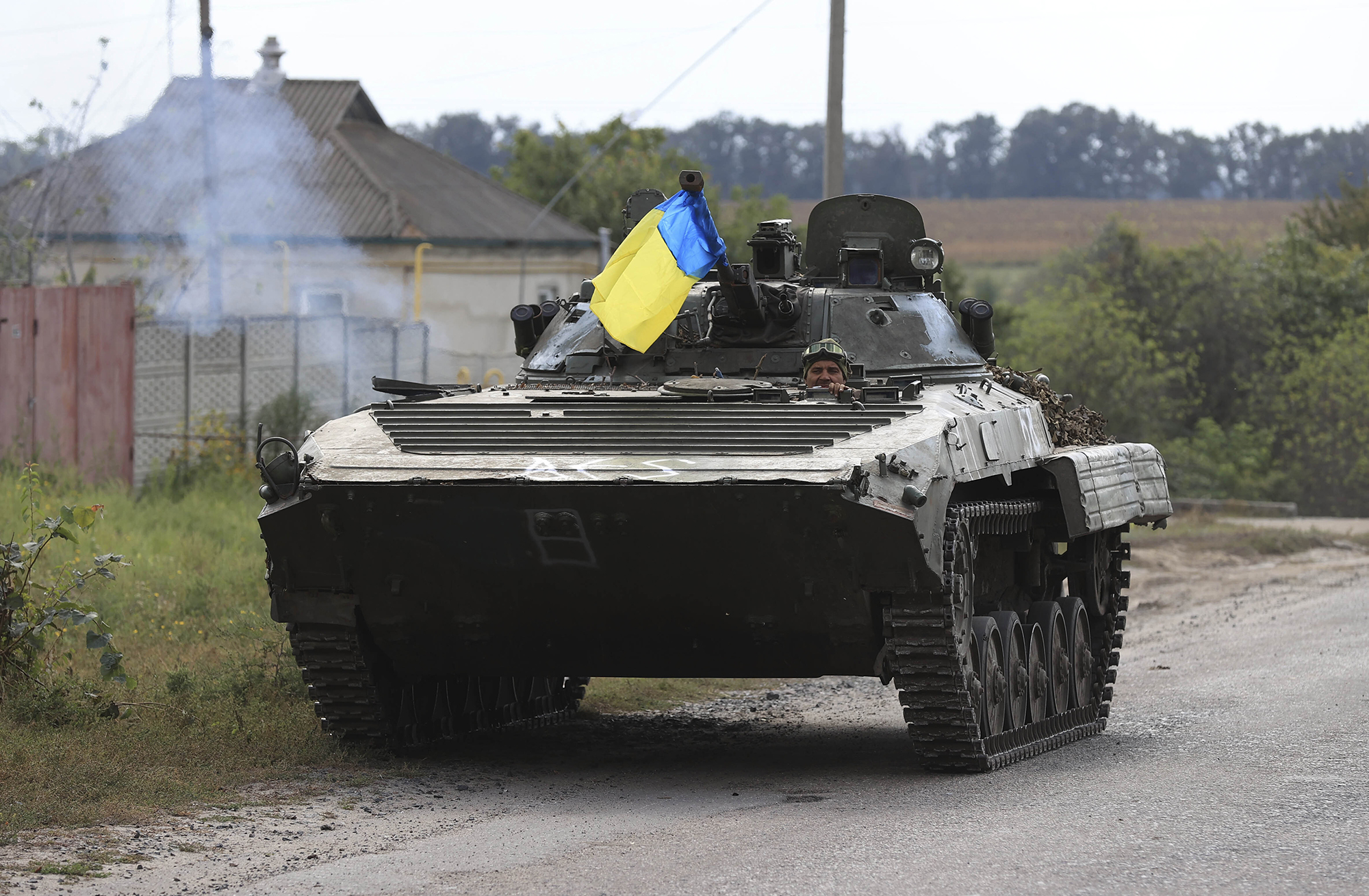 Counteroffensive in the Kharkiv region
Counteroffensive in the Kharkiv region
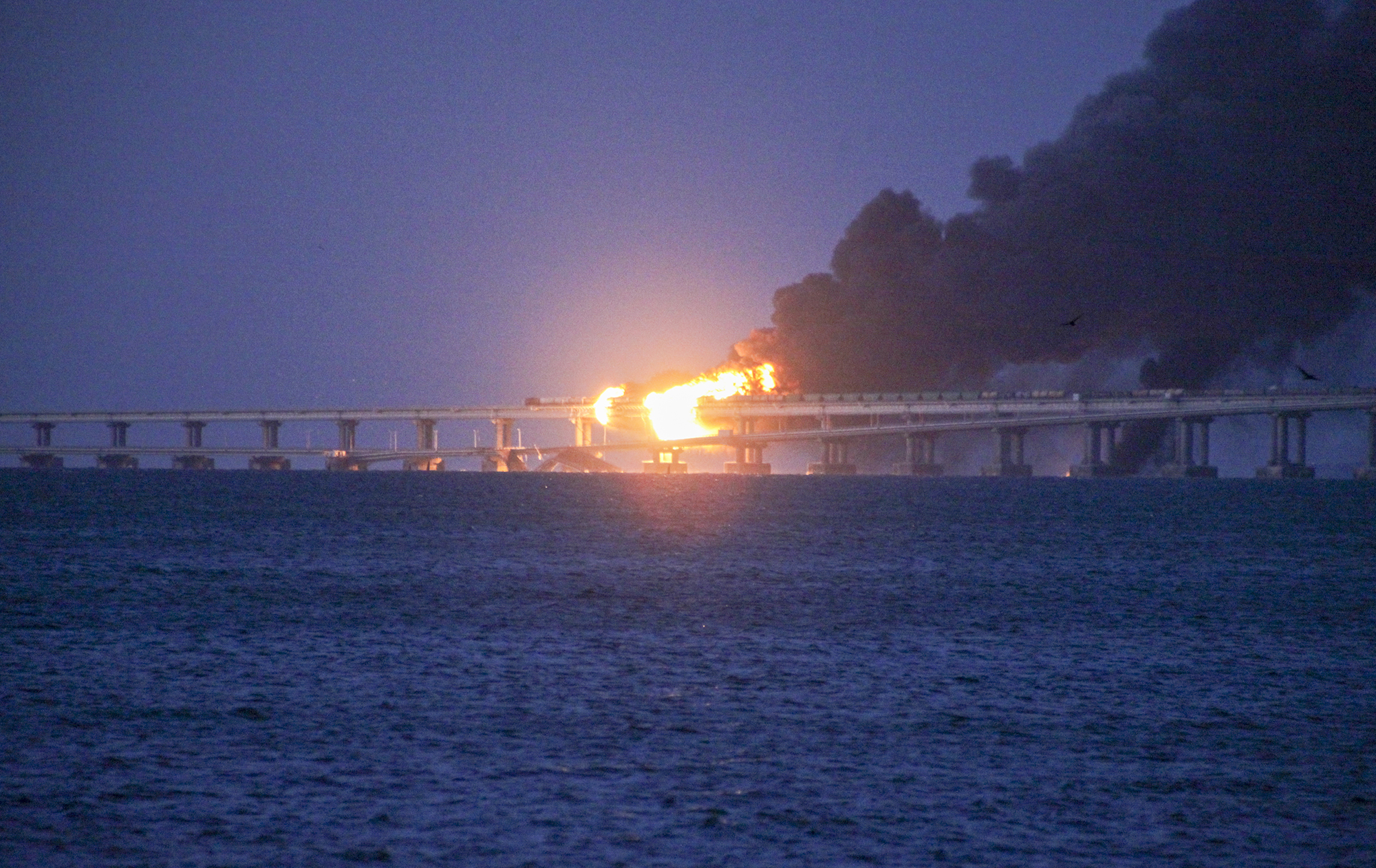
 Massive shelling of energy infrastructure
Massive shelling of energy infrastructure
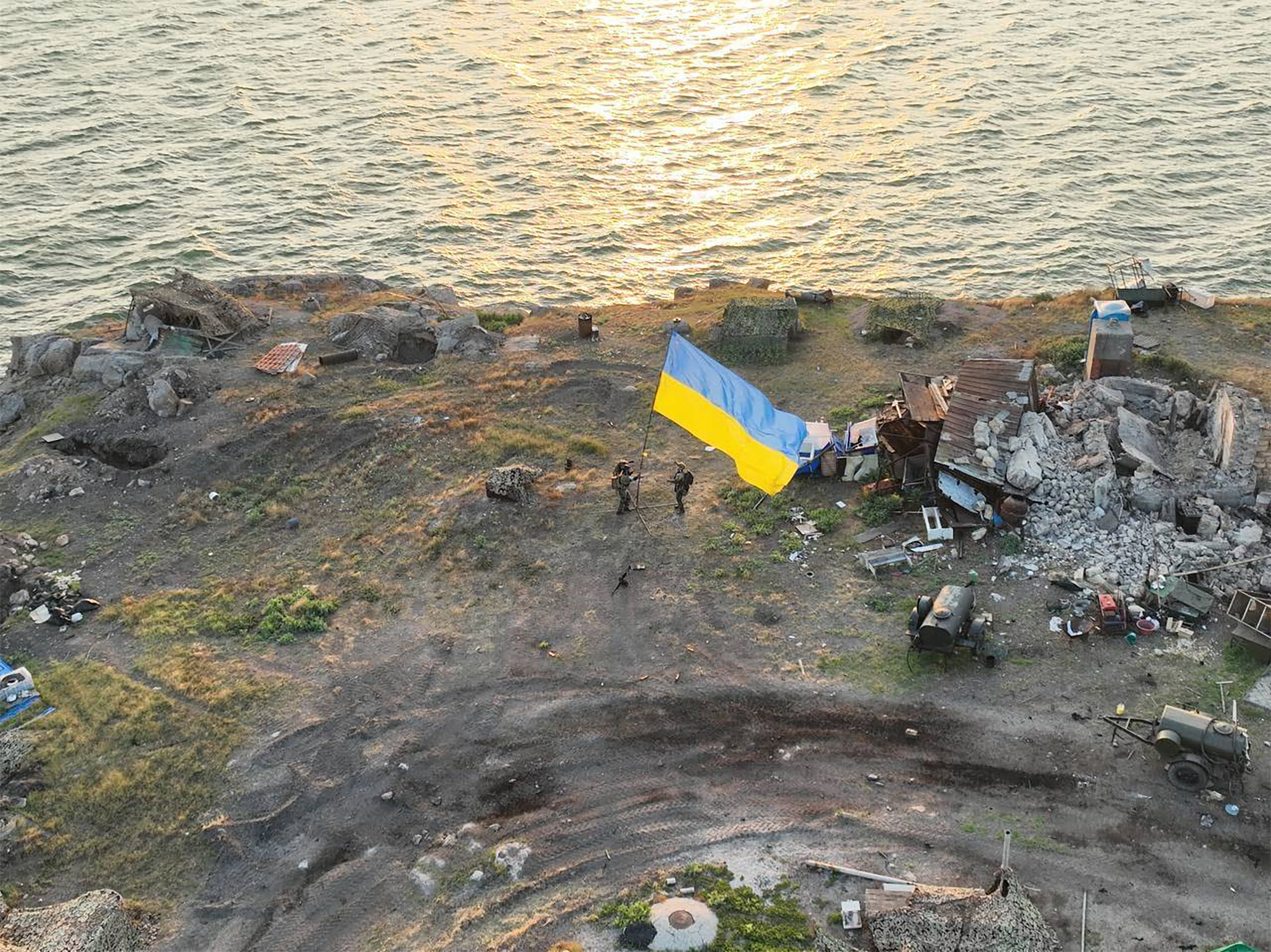

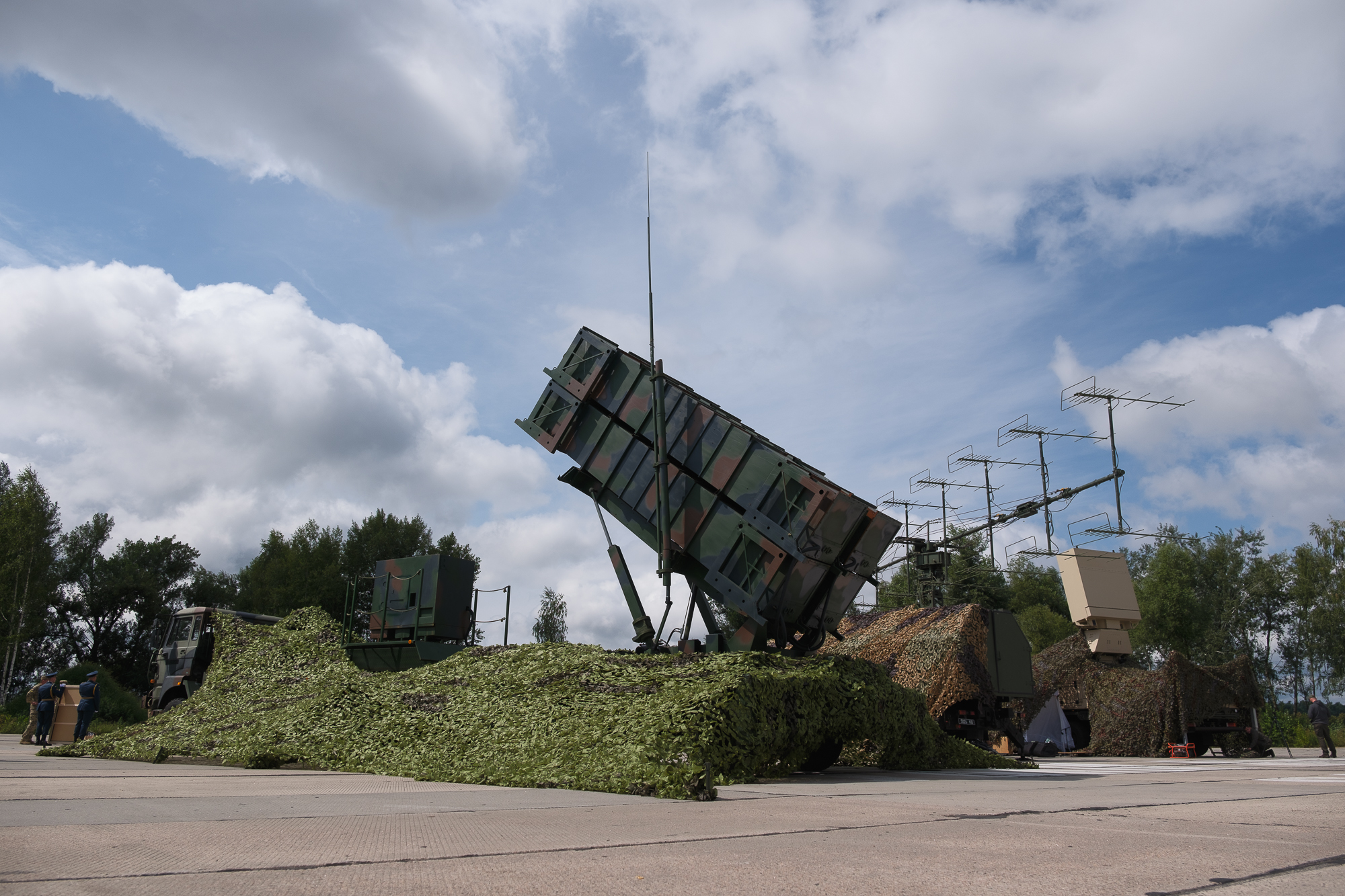
 Strike on the Russian Black Sea Fleet HQ
Strike on the Russian Black Sea Fleet HQ
 Resignation of General Zaluzhnyi
Resignation of General Zaluzhnyi
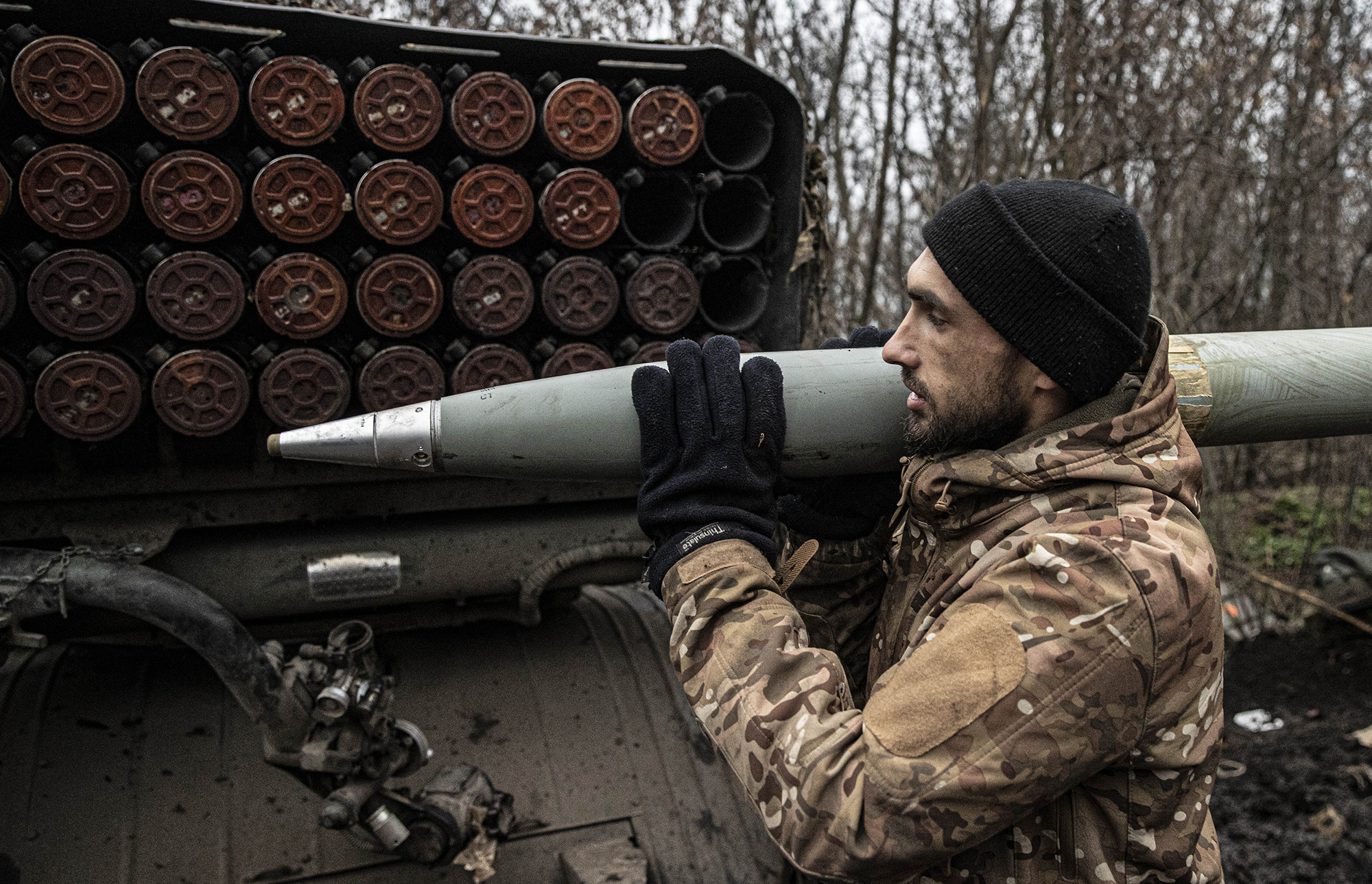 Ukraine's shell shortage
Ukraine's shell shortage




